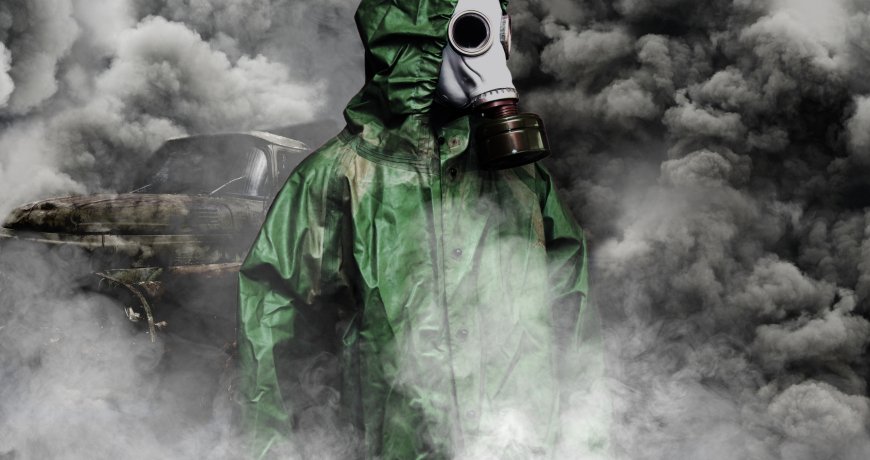How to Demystify: Amazement of the Mechanism GP5 Gas Mask
Unveiling the Mechanics of Protection: How Do Gas Masks Work?
How Do Gas Masks Work? In a world where unforeseen dangers can lurk in the air we breathe, the gas mask stands as a testament to human ingenuity, providing a crucial line of defense against toxic gases, pollutants, and other respiratory hazards. Let’s embark on a comprehensive exploration into the intricate workings of gas masks, unraveling the mechanisms that transform these devices into lifesaving guardians.
1. The Essence of Protection: Filtration Systems
At the heart of every gas mask lies a sophisticated filtration system, a meticulously engineered network designed to intercept and neutralize harmful agents. The primary objective is to prevent toxic substances from entering the respiratory system while allowing the wearer to breathe freely.
2. The Filters: Gatekeepers of Clean Air
Gas mask filters are the unsung heroes of the protective ensemble. Comprising various materials, these filters are strategically chosen based on their ability to trap, absorb, or neutralize specific contaminants. Common filter components include activated charcoal, which excels at adsorbing gases, and high-efficiency particulate air (HEPA) filters that trap particulate matter.
3. Particle Filtration: Capturing the Unseen Threats
For airborne particles such as dust, smoke, and biological agents, gas masks employ particle filters. These filters consist of layers of fibrous materials arranged to create a labyrinthine path. As air passes through, particles are physically obstructed, preventing them from reaching the wearer’s lungs.
4. Adsorption: The Art of Capturing Gases
Activated charcoal, a staple in many gas mask filters, is renowned for its adsorptive properties. Unlike absorption, where a substance is taken into the absorbing material, adsorption involves the adherence of molecules to the surface of the adsorbent. This makes activated charcoal highly effective in trapping and neutralizing a wide array of gases.
5. Chemical Warfare Agents: Neutralizing the Threat
In the context of chemical warfare agents, gas masks are equipped to tackle a spectrum of toxic substances, including nerve gases and blister agents. The filtration system works by chemically reacting with and neutralizing these agents, rendering them harmless before they reach the wearer’s respiratory tract.
6. Airtight Seals: Safeguarding the Perimeter
A gas mask is only as effective as its ability to create a secure seal around the wearer’s face. Airtight seals are paramount in preventing contaminants from bypassing the filtration system. Masks typically feature adjustable straps and nose clips to ensure a snug fit, creating a barrier that enhances overall protection.
7. Exhalation Valves: Maintaining Breathability
Balancing protection with breathability is a delicate feat, and gas masks achieve this equilibrium through the inclusion of exhalation valves. These valves allow the wearer to expel air easily, preventing the buildup of heat and moisture within the mask, and ensuring a comfortable and sustainable breathing experience.
8. Beyond Filtration: Additional Protective Features
Gas masks often come equipped with supplementary features to enhance user safety. These may include anti-fogging lenses, communication devices, and hydration systems, addressing secondary concerns to ensure wearers can navigate their environments with clarity and ease.
9. Training and Maintenance: Ensuring Efficacy
Effectiveness in utilizing a gas mask is not solely reliant on its construction but also on user proficiency. Proper training in mask donning and maintenance is crucial for optimizing protection. Regular checks, filter replacements, and adherence to manufacturer guidelines contribute to the long-term efficacy of gas masks.
10. Evolving Technologies: Adapting to Contemporary Challenges
As technology advances, so does the landscape of gas mask design. Innovations in materials, filtration technologies, and communication features continue to refine these protective devices, ensuring they remain at the forefront of safeguarding against a diverse array of hazards.
A Symphony of Safety and Engineering
In conclusion, the gas mask is a masterpiece of engineering, orchestrating a symphony of protective features to safeguard lives in the face of respiratory threats. From the intricacies of filtration systems to the precision of airtight seals, gas masks exemplify the marriage of science and practicality. As these devices evolve to meet contemporary challenges, they stand not only as symbols of preparedness but as timeless guardians of respiratory well-being, emphasizing that in the delicate dance between humans and their environments, the breath of life deserves the utmost protection.
Nullam viverra convallis tellus. Nulla fermentum dictum congue. Quisque enim felis, molestie ac tempor vel, auctor a magna. Sed viverra laoreet turpis, vitae pellentesque sem viverra sed. Integer posuere est a sem viverra, et commodo metus eleifend. Mauris maximus eros pretium laoreet laoreet. Duis vel urna dolor. Sed vel metus et erat imperdiet hendrerit tincidunt pulvinar ligula. Duis tempus enim a leo scelerisque dapibus. Suspendisse scelerisque est nec est faucibus mollis venenatis eget augue.




